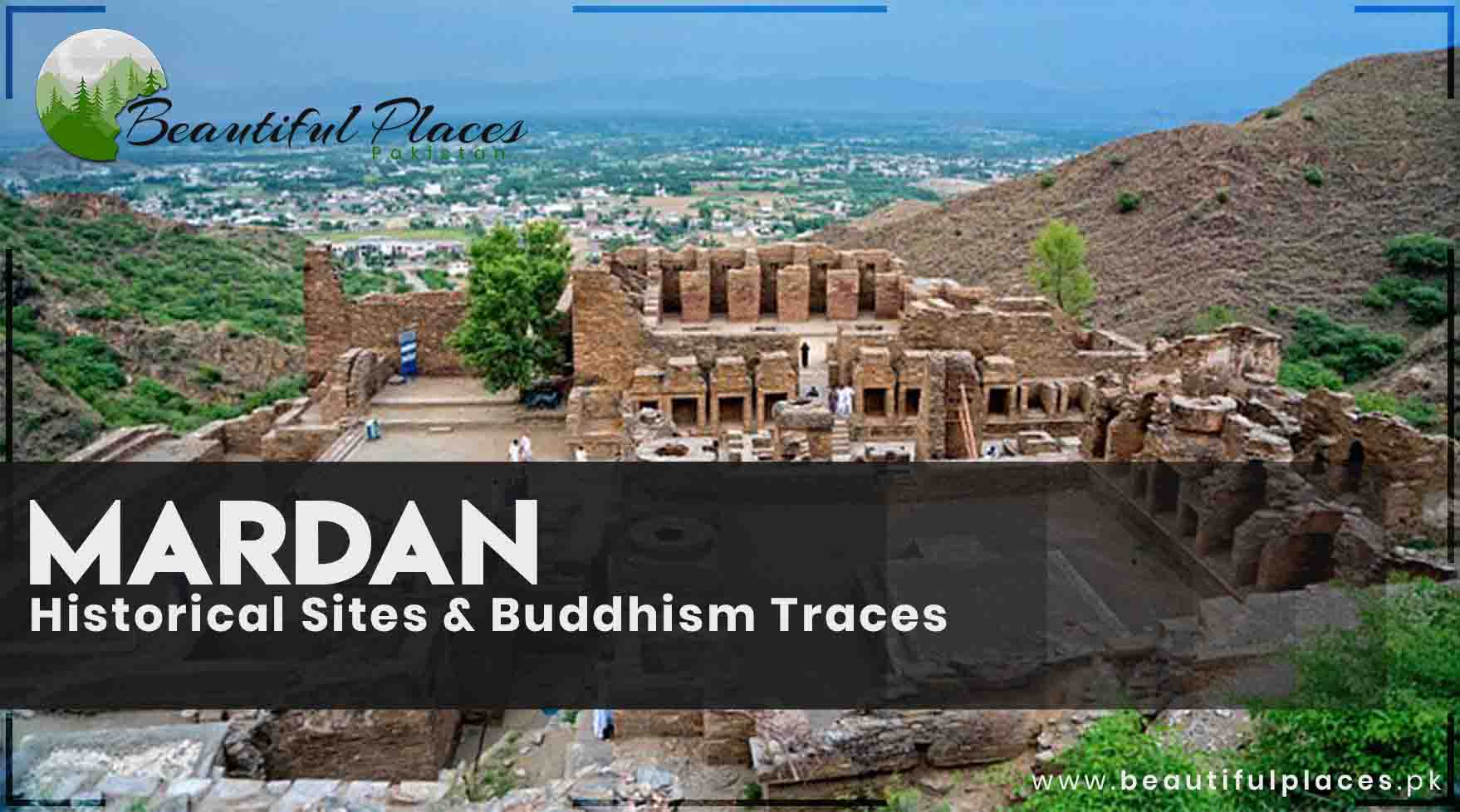Mardan
Mardan is a historical city of Khyber Pakhtunkhwa. Mardan’s history stretches back thousands of years, with archaeological sites in and around the city bearing witness to its ancient roots. But this city isn’t just a repository of history; it’s a vibrant hub of contemporary life, where modernity mingles with the echoes of the past.
The city is known for its welcoming residents and a unique blend of customs and traditions. It’s a place where the cultural tapestry is as colorful as the fields of wheat and sugarcane that stretch to the horizon. Mardan is also celebrated for its contributions to education, with a number of prestigious institutions calling it home.
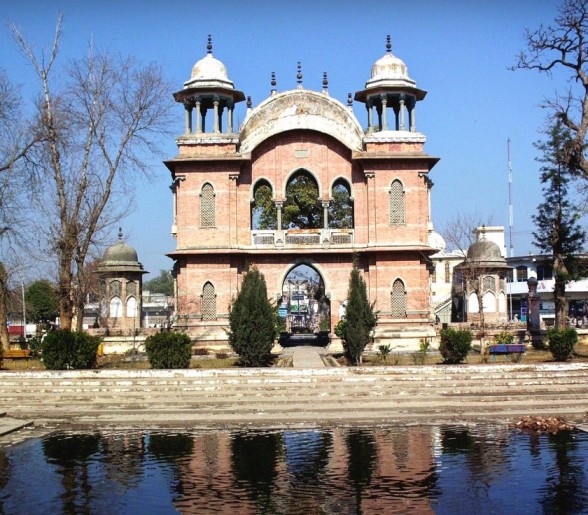
Whether you’re a history enthusiast, a cultural explorer, or simply seeking the warmth of a hospitable community, Mardan has something to offer. From ancient archaeological treasures to bustling bazaars and educational centers, Mardan is a city where the past and the present coexist harmoniously, waiting to be discovered and embraced. It has five districts.
- Mardan Tehsil
- Takht Bhai Tehsil
- Katlang Tehsil
- Rustam Tehsil
- Lund Khwar Tehsil
Key information about Mardan
| Heading | Information |
|---|---|
| Location | Mardan is located in Khyber Pakhtunkhwa, Pakistan. It is situated in the heart of the province. |
| Historical Sites | Mardan is rich in historical significance, with archaeological sites like Takht-i-Bahi and Shahbaz Garha showcasing ancient heritage. |
| Cultural Heritage | The city boasts a vibrant cultural scene, featuring traditional customs, festivals, and a warm and welcoming community. |
| Education | Mardan is home to renowned educational institutions, including Abdul Wali Khan University and Bacha Khan Medical College. |
| Economy | The local economy is primarily agrarian, with agriculture, particularly the cultivation of wheat and sugarcane, being a significant contributor. |
| Bazaars and Markets | Mardan is known for its bustling bazaars and markets, offering a wide array of local products and a taste of the regional lifestyle. |
| Modern Amenities | The city combines its historical and cultural charm with modern amenities, providing residents and visitors with a comfortable urban experience. |
History
Mardan, a city in Khyber Pakhtunkhwa, Pakistan, is a living testament to the intricate tapestry of history woven throughout the ages. This ancient city has a storied past that stretches back millennia, and its historical significance is evident in the many archaeological sites and cultural influences that have left their mark.
At the heart of Mardan’s historical legacy lies the renowned archaeological site of Takht-i-Bahi. This Buddhist monastic complex, now a UNESCO World Heritage Site, serves as a window to the Gandhara civilization. Its stone stupas, monastic cells, and intricate carvings tell the tale of a bygone era when Buddhism thrived in the region.
But Mardan’s history isn’t confined to its archaeological treasures alone. The city’s name itself is associated with a historic figure, Mardan Singh, who is said to have founded the city during the rule of the Sikh Empire. The legacy of the Pashtun tribes that have called Mardan home for centuries adds yet another layer to its history.
The city’s history is a reflection of the region’s cultural diversity and the ebb and flow of various empires and civilizations. Mardan stands as a bridge between the past and the present, where historical sites, customs, and traditions continue to be cherished and celebrated. It’s a place where ancient stones and modern streets coexist, inviting visitors to delve into the rich heritage that defines this charming city.
Famous Historical, Archaeological Sites, and Delicacies of Mardan
Mardan Museum
Mardan is well known for its army base camp for two hundred years which is situated on the highway directed to Swat Valley. It is 64 km from Peshawar and 25km from Nowshera.
It is a culturally rich city. Especially, the Gandara civilizations signs are prevailing there. Proof of this is the archaeological signs of Jamal Garhi, Sehri, Behlol, Shahbaz Garhi, and Takht Bhai. In April 1991, Mardan Museum was established to save the culture of the region. It was temporarily established in Mardan Auditorium.
Initially, Peshawar Museum, the archaeological department of the University of Peshawar, and Chakdra museum contributed. Sculptures and other artifacts were decorated beautifully in different showcases of the Museum.
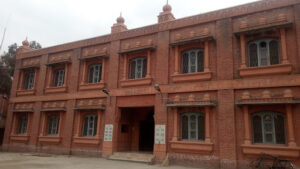
Badayuni Peray
These are special and famous peray (a confectionery item) of Mardan. They were prepared in the district Badayuni of the province of Uttar Pradesh of India. After the creation of Pakistan, seven brothers of a family immigrated to Mardan Pakistan, and started a business of Badayuni Peray.
Today, these healthy, delicious, and nutritious peray are the identity of Mardan.
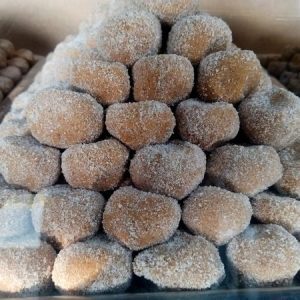
Jamal Garhi
The historical archaeological remains of Jamal Garhi are on the hilltop at a height of 152 meters. These signs are 13km to the north of Mardan. Actually, it was a monastery. And it was discovered by sir Gangham in January 1948.
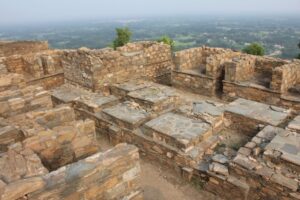
Later on, a British Karnal tool a sculpture loaded on 12 camels with him. Due to the negligence of the government, people took many valuable artifacts from there. Its stupa indicates that it was built during the reign of Ashoka in Gandhara.
Small rooms are designed around the stupa to erect the sculptures. The monastery was not in square shape and separate rooms are built for monks. This two-floor building had a veranda, a courtyard, and stupas. A Buddha monastery is in the Turali region which is 2km to the east of Jamal Garhi.
Shahbaz Garhi
The area of Shahbaz Garhi is on Swabi road which is 15km from Mardan city. The historical significance of this area, which is full of Buddhist relics, is that Maharaja Ashoka, the guardian of Buddhism, also engraved his edict here.
Besides this, there is linger fort which was built by Mughal emperor Akbar. A few kilometers away is Isotamegalth near Shiva Ada.
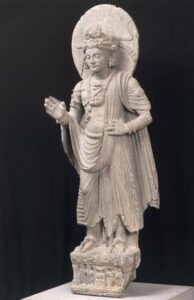
Seri Bahlol
This area consists of dozens of Dheri or archaeological and is located at a distance of 7 miles from Mardan. Many coins have been discovered here during excavations. According to experts’ analysis, it was settled in the first century.
The experts have declared it an important center of Buddhism. The UN Department of UNESCO has declared it a World Heritage.
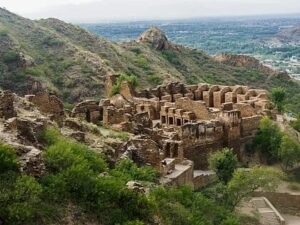
Takht Bhai (Land of Inspiration)
On the way to Swat from Mardan, a few miles away, at Takht Bhai’s place, the intellectual and religious center of Buddhism of Raja Kanishka’s time is now known as Takht Bhai ruins. There were many small empires in the Kanishka era. The empire of raja Bihai was called “Takht Bhai” which has a means of the empire of Bihai.
A monastery was established at a high rock for the promotion and religious training of Buddha monks. People used to come here from distant places to seek knowledge of Buddhism. The remains of the rooms proved this.
There are small rooms on both sides of the tunnel-like basements where monks used to meditate and worship for months. This seminary, a great masterpiece of Gandhara, had a unique place in the world for the promotion and propagation of Buddhism.
All kinds of facilities were provided here. Its small rooms were built with such skill that the light in these rooms is so well arranged that when the sun rises the rays of the sun enter through the holes and illuminate the meditation hall and its rooms. And its light is maintained at regular intervals till sunset.
This unique piece of Gandhara art will be reminiscent of the Buddhist era throughout history.
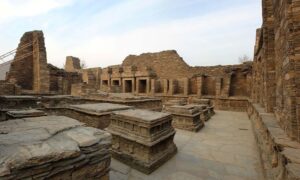
Sheikh Maltoon Town
Named after the renowned Pashto poet Sheikh Ayaz, this modern residential area is known for its well-planned layout and urban amenities.
Ghazni Khel Park
A popular recreational area in Mardan, this park provides green spaces for relaxation and outdoor activities.
Tarnab Farms
Located near Mardan, these farms offer agricultural experiences, showcasing the region’s prominence in the agricultural sector.
Culture& Traditions
- Hospitality: Mardan is renowned for the hospitality of its people. Guests are welcomed with open arms and are treated to traditional Pashtun customs of generous hospitality. It’s common to see gatherings where guests are served with delicious local cuisine and tea, embodying the Pashtun tradition of melmastia (hospitality).
- Festivals: The city comes alive with an array of festivals and cultural events. One of the most prominent is the Jashn-e-Kite festival, where residents celebrate by flying colorful kites in the skies. This vibrant festival reflects the joy and exuberance of the community.
- Traditional Attire: Mardan’s cultural attire is a vivid reflection of its Pashtun heritage. Men can be seen wearing the traditional shalwar kameez and Peshawari chappal, while women often dress in brightly colored dresses, often with intricate embroidery.
- Music and Dance: Music and dance are an integral part of Mardan’s cultural fabric. The rabab, a traditional musical instrument, is frequently heard in folk music performances, and the attan dance is a spirited Pashtun dance often performed at gatherings.
- Art and Craft: Mardan has a thriving tradition of arts and crafts, including intricate embroidery and handwoven textiles. These crafts are not only a source of livelihood but also a means of preserving cultural heritage.
Schools
- The Educators School & College
- Iqra Public School and College
- Mardan Model School & College
- Dar-e-Arqam School
- The City School Mardan Campus
Colleges
- Abdul Wali Khan University, Mardan
- Government Postgraduate College, Mardan
- Jinnah College for Women, Mardan
- Government College of Technology, Mardan
Restaurants
- Khan Baba Restaurant
- Shaheen Shinwari Restaurant
- Saad’s Fast Food & Restaurant
- Grill Master
- Cafe 72
Hospitals
- Mardan Medical Complex
- District Headquarters Hospital Mardan
- Bilal Hospital Mardan
- Bacha Khan Medical Complex
- Life Care Hospital Mardan
Frequently asked questions (FAQs)
Q: What is the historical significance of Takht-i-Bahi in Mardan?
A: Takht-i-Bahi, a UNESCO World Heritage Site, holds immense historical importance as a Buddhist monastic complex dating back to the Gandhara civilization. It offers a unique insight into the region’s ancient heritage.
Q: What are the popular festivals celebrated in Mardan?
A: Mardan hosts various festivals, including the vibrant Jashn-e-Kite festival, which involves the flying of colorful kites. Pashtun cultural festivals are also celebrated with zeal.
Q: What is the traditional attire in Mardan?
A: The traditional attire in Mardan includes shalwar kameez for men and brightly colored dresses with intricate embroidery for women. It reflects the Pashtun cultural heritage.
Q: What are the must-try dishes in Mardan?
A: Mardan is known for its delicious Pashtun cuisine, including specialties like chapli kebabs, seekh kebabs, and flavorful pulao. Local nan (bread) is a staple in every meal.
Q: Can I visit Mardan’s archaeological sites?
A: Yes, Mardan is home to fascinating archaeological sites, including Takht-i-Bahi and Shahbaz Garha, which are open to visitors interested in exploring the region’s history.
Q: What is the significance of the River Swat in Mardan?
A: The River Swat flows near Mardan and offers serene spots like Rani Ghatt for picnics and leisure. It’s a place to enjoy the natural beauty of the area.
Q: Are there any modern amenities in Mardan?
A: Mardan combines its historical charm with modern conveniences, ensuring that residents and visitors have access to urban amenities and a comfortable lifestyle.
Q: What is the best way to experience Mardan’s culture and traditions?
A: To immerse yourself in Mardan’s culture, attend local festivals, savor traditional cuisine, and interact with the welcoming residents who embody Pashtun hospitality.
Wind Up Lines
KPK has a deep-rooted history. There are many traces of Buddhism in the province of Khyber Pakhtunkhwa. Mardan is one of them.
If you don’t want to visit all of them then must visit the archaeological site of Takht Bhai. You will understand a lot about Buddhism. There are many shops for Chapli Kebab (slice of meat mince cooked with different spices). And never forget to take Qahwa after that.
